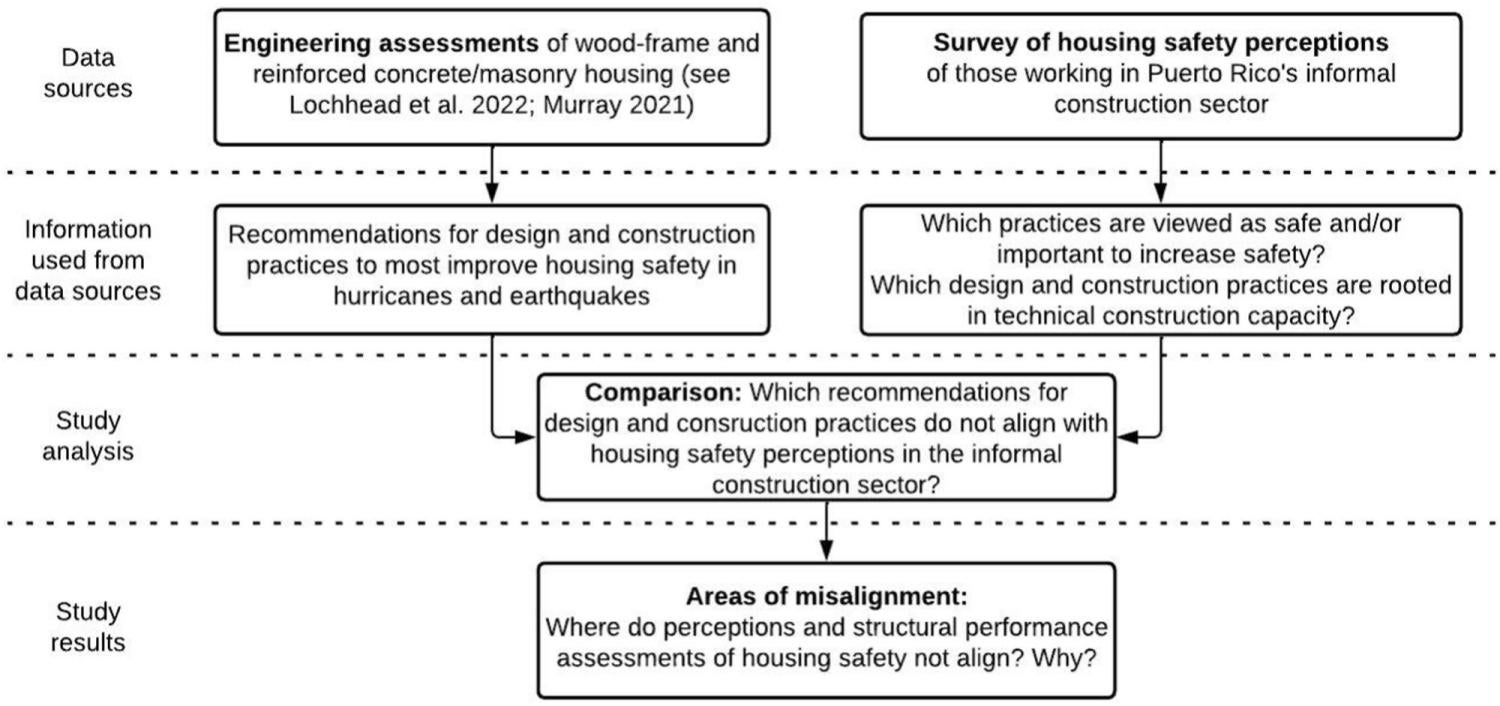Identifying misalignments between the informal construction sector's perceptions and engineering assessments of housing safety in future disasters for capacity development.

This study investigates areas where perceptions of those working in Puerto Rico's informal construction sector and engineering assessments of housing safety in future disasters misalign, identifying areas for construction capacity development to reduce hurricane and earthquake risk. We compared survey results from 345 individuals building and advising in the informal construction sector to the recommendations from our prior work assessing wind and seismic performance of informally constructed housing configurations. The study found four misalignments between perceptions and engineering assessments, where survey respondents did not agree with the recommendations. For wood-frame housing, our findings reveal builders and residents may not be prioritizing hurricane straps to strengthen key connections and avoid catastrophic failures because they do not view hurricane straps as efficacious. For reinforced concrete/masonry housing, we found builders and residents are associating heaviness with safety; building confined, rather than infill masonry; and building open-ground-story housing with weak columns, presenting seismic risks. Each of these misalignments was based on local expert insight about unsafe practices that are due to technical construction capacity rather than solely resource constraints. This study contributes to literature on the housing safety perceptions driving informal construction, provides an approach for comparison of local and scientific knowledge, and supports capacity development for disaster risk reduction.
Goldwyn, B., Vega, Y. G., Javernick-Will, A., & Liel, A. B. (2022). Identifying misalignments between the informal construction sector's perceptions and engineering assessments of housing safety in future disasters for capacity development. International Journal of Disaster Risk Reduction, 103105.
Goldwyn, B., Vega, Y. G., Javernick-Will, A., & Liel, A. B. (2022). Identifying misalignments between the informal construction sector's perceptions and engineering assessments of housing safety in future disasters for capacity development. International Journal of Disaster Risk Reduction, 103105.
Categories: Journal Articles

